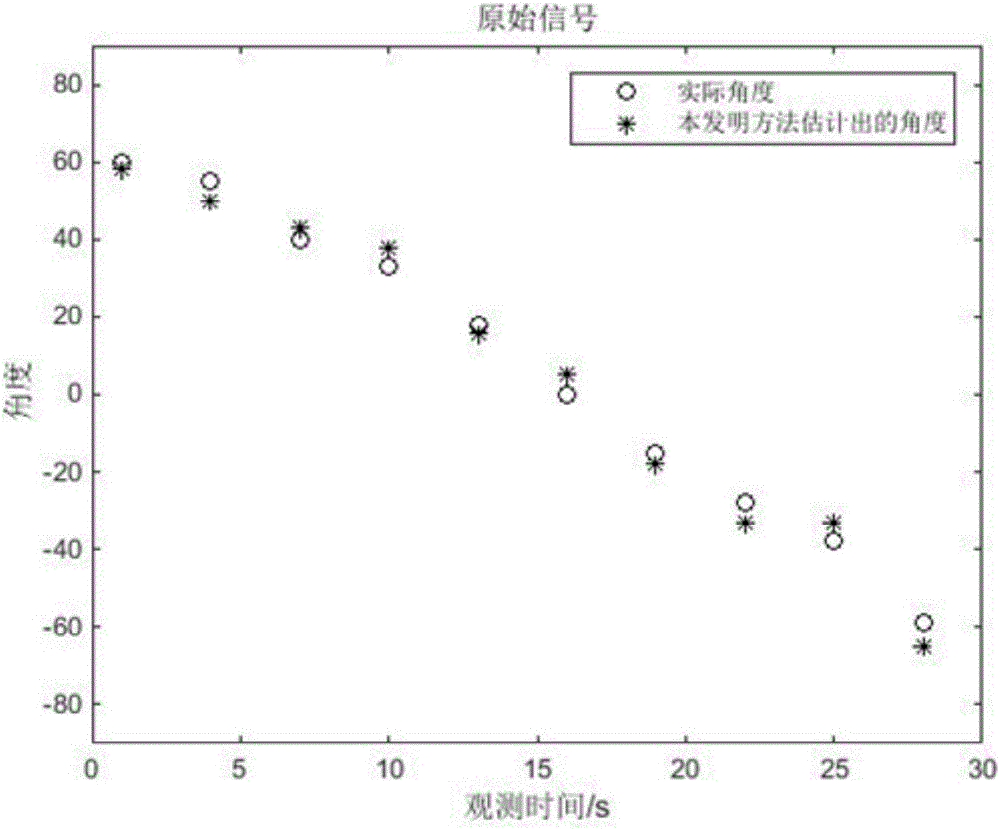Unmanned aerial vehicle direction estimation method based on voiceprint multiharmonic identification
A technology for direction estimation and unmanned aerial vehicles, applied in direction finders using ultrasonic/sonic/infrasonic waves, systems for determining direction or offset, and various systems for orientation, etc., can solve the problem of poor performance of algorithm estimation and sub-band The energy distribution signal-to-noise ratio is not the same, and the effect of small error and high estimation accuracy is achieved
- Summary
- Abstract
- Description
- Claims
- Application Information
AI Technical Summary
Problems solved by technology
Method used
Image
Examples
Embodiment
[0040] Control the DJI Phantom-3 quadrotor UAV to fly over the area where the cross-shaped acoustic array is located, run the Labview program on the computer, and collect sound signals through the microphone of the acoustic array. The sampling frequency is 5120HZ, and the array element spacing is 0.17m. The number of elements is 3, and the number of target sources is 1. Define the included angle between the sound and the normal plane of the sound array as the direction angle, and the range is [‐90,90]. Under the current sampling frequency, the characteristic frequency range can be obtained: [140,200],[300,380],[470,550],[650,740]. (Unit: HZ).
[0041] figure 2 with image 3 They are the effect diagrams of UAV sound angle estimation by the traditional method and the method of the present invention respectively. By comparison, it can be seen that the method of the present invention can better estimate the UAV sound angle, and the accuracy is obviously better than the traditi...
PUM
 Login to View More
Login to View More Abstract
Description
Claims
Application Information
 Login to View More
Login to View More - R&D
- Intellectual Property
- Life Sciences
- Materials
- Tech Scout
- Unparalleled Data Quality
- Higher Quality Content
- 60% Fewer Hallucinations
Browse by: Latest US Patents, China's latest patents, Technical Efficacy Thesaurus, Application Domain, Technology Topic, Popular Technical Reports.
© 2025 PatSnap. All rights reserved.Legal|Privacy policy|Modern Slavery Act Transparency Statement|Sitemap|About US| Contact US: help@patsnap.com



